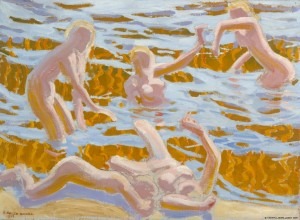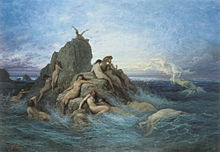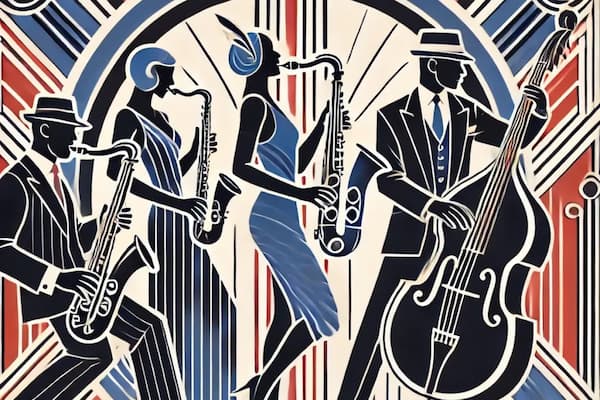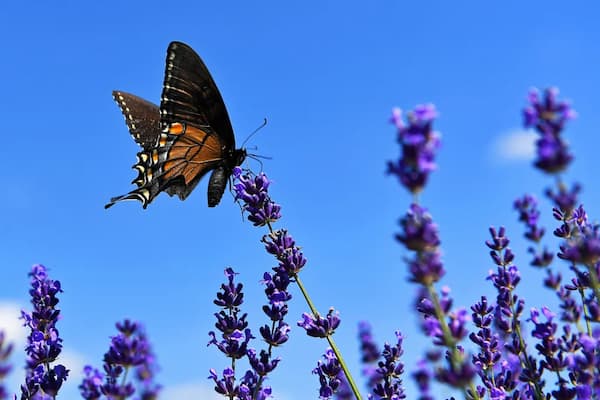
Aallottaria, by Akseli Gallen-Kallela
(c. 1909)
They were also the rare non-Nordic inspiration for Jean Sibelius and his tone-poem Aallottarte (The Oceanides), written in 1914. The work was commissioned by two American patrons, Carl Stoeckel and Ellen Battell-Stoeckel for a 15-minute work to be given its premiere at the 1914 Norfolk, Connecticut, Music Festival. After a troubled and delayed start, where he debated the subject matter of the piece with himself, he finally started the work in early 1914. He first thought of the work as a three-movement suite for orchestra. Of those first 3 movements, he discarded the first movement and rewrote it as a single movement tone poem. He used material from the other movements in other works. He sent this one-movement score to the US for its premiere only to have the couple commissioning the work make a new offer. The initial commission was for $1,000 (about $23,000 in today’s money); now, for an additional $1,200, the Stoeckels requested that Sibelius himself come and conduct the piece and receive an honorary doctorate from Yale University. Sibelius accepted and in light of these honours, rewrote the work one more time.
The first version that he’d sent to the Stoeckels in April 1914 is shorter than the final version. The shorter version, known as the Yale version, lacks the dramatic finish of the final version.
Sibelius: The Oceanides, Op. 73 (Yale version) (Lahti Symphony Orchestra; Osmo Vanska, cond.)
For the final version, Sibelius changed the key, added another trumpet, added a final section, and changed the name of the work from Rondeau der Wellen to Aallottaret. For its publication by the German publishers Breitkopf & Härtel in 1915, he added the German translation Die Okeaniden and that is the name it is most commonly known by today.

Les Oceanides (Les Naiades de la mer) by Gustave Doré (c. 1860)
Sibelius: The Oceanides, Op. 73 (Final version) (Lahti Symphony Orchestra; Osmo Vanska, cond.)
The new work concluded the first half evening’s concert – the other works were also by Sibelius, including Pohjola’s Daughter, the King Christian II Suite, The Swan of Tuonela, Finlandia, and Valse triste. The second half of the concert included Dvořák’s Ninth Symphony, American composer Samuel Coleridge-Taylor’s From the Prairie, and the overture to Wagner’s opera Die Feen. The entire evening ended with the Finnish national anthem, Vårt Land. All concert-goers felt that they were at the musical event of their lives.


